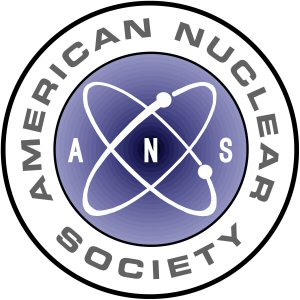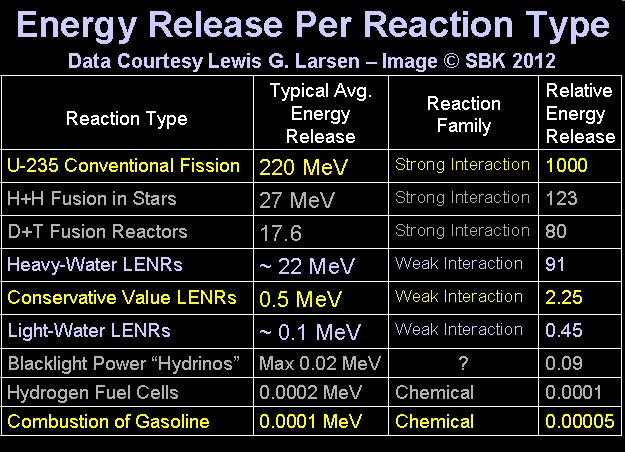Report of LENR Session at American Nuclear Society

Nov. 30, 2012 – By Steven B. Krivit –
For the first time in a decade, the American Nuclear Society hosted a low-energy nuclear reaction session.
It took place at the ANS Winter meeting on Nov. 14 from 8:30 to noon at the Town and Country Hotel in San Diego, Calif.
I organized the session at the request of Roger Tilbrook, a past executive director of the ANS. Two experimentalists spoke with me there, Yasuhiro Iwamura and Domenico Cirillo, who have both observed clear nuclear evidence, including transmutations, isotopic abundances and neutron-burst evidence.
A theorist — Lewis G. Larsen — from the only group that has a potential winning LENR theory also spoke. We each presented a talk and fielded questions in an open discussion. Larsen was unable to travel there, but he presented over the phone.
In addition to Tilbrook, the audience included representatives from the Canadian government, Nuclear News, Rolls Royce Corp. (which manufactures nuclear submarines), Aerospace Corp., Westinghouse Corp., other energy companies and a few students.
The audience took the subject seriously and asked thoughtful questions. The reporter from Nuclear News asked about exact replications. I explained that exact replications are not common in the field because researchers usually apply their own ideas to the experiments. Later, I remembered that minor variances in experimental protocol increase, rather than decrease, replication confidence, according to Harry M. Collins, an expert on the topic of scientific replication. The reason, according to Collins, is that part of the expectation of the scientific method is that a valid effect should be obtainable through a variety of methods.
One person in the audience asked about a commercial LENR device that he had heard about. I explained that there was no device yet. People have claimed to have commercial LENR devices or devices that have been nearly ready for two decades.
New Energy Times maintains a list of commercial LENR companies on this Web page. Some of the companies are legitimate; others are not. Some have disappeared; others remain. The main problem with commercializing LENRs is that the science is poorly understood. No technology can be developed until the science is understood.
LENR devices likely will be small and relatively inexpensive. These characteristics often lead people to expect that companies can produce commercial devices now. However, even after the science is clearly understood, practical devices likely will require complex high technology to manufacture. Eventually, real commercial LENR devices will hit the market. Meanwhile, potential investors and fans should check facts carefully. New Energy Times has investigated several questionable science and technology claims in the field.
A New Paradigm in Nuclear Energy?
In my talk, I suggested that the development of LENRs into an energy technology may follow a path similar to that of another, older technology: computer systems.
The first mainframe computer technology was and still is similar: based on clearly understood science, works on a large scale, in centralized systems and is expensive. However, it no longer represents an expanding and improving technology.
Over time, mainframe computers shared their formerly exclusive domain with minicomputers; later, microcomputers joined the computing field. Microcomputers are now a crucial technology application in the developed world. They are small, inexpensive and decentralized.
Existing nuclear energy is based on clearly understood science, works on a large scale, in centralized systems, is expensive and represents a viable, expanding technology.
LENRs may represent a new paradigm in nuclear energy, but the underlying science remains, generally, poorly understood. In time, LENRs likely will evolve to provide small, inexpensive and decentralized power systems.
Clarification on 1926 LENR Experiment
LENR research, although it was not called such, began nearly a century ago. One piece of new information that I presented was a clarification on Fritz Paneth and Kurt Peters’ work at the University of Berlin in 1926. Some scientists have believed that Paneth and Peters retracted their claim of transmutation of hydrogen into helium. I had their retraction paper translated from German. To my great surprise, I found that Paneth and Peters did not find that they had made an error of protocol or analysis. Instead, they lost their confidence and tried to explain away their results.
They speculated on how one of their two experimental methods could have been the result of an artifact. They wrote that their claims based on the one method should be withdrawn. However, they didn’t find an error; they only found a possible ordinary explanation for the apparent transmutation.
As to their second method, they could not find any ordinary explanation to explain their profound results; however, they were certain that future research would reveal their mistake.
“For the rest of the positive tests, even today we cannot give an explanation. But since the majority of our experiments have explained themselves in a ‘natural’ way, we think it probably will also happen for our outstanding (unexplained up to now) experiments,” Paneth and Peters wrote.
As both the experimental and theoretical work at this ANS session showed, Paneth and Peters most likely had succeeded.
Key Points
The three key points from my talk follow:
- Are LENRs fusion? — No
- Are LENRs nuclear? — Yes
- Do LENRs have potentially high reaction rates? — Yes
I summarized the technical distinctions between fusion and LENRs. I had presented portions of this topic at earlier American Chemical Society conferences, but slides 12 through 22 from my presentation at this ANS meeting bring all the information together.
On slide 25, I summarized why the Widom-Larsen theory is in a class of its own. Readers who want to learn more about that theory can go to this page. Readers who want to learn about other, less-developed LENR theories, such as the ideas of Peter Hagelstein or Yeong Kim, will find listings on this page.
On slides 26-32, I presented a high-level overview of how LENRs work, based on original concepts developed by Larsen.
On slides 33-53, I presented, for the first time, a set of 20 simple conceptual diagrams that represent most LENR experimental methods. As the diagrams show, the research consists of far more than simple deuterium-palladium electrolysis. The most surprising method is the one that Tadahiko Mizuno, a researcher now working in his own privately funded lab, is exploring.
Mizuno is using phenanthrene, a polycyclic aromatic hydrocarbon, under pressure and elevated temperature, and loading hydrogen into it to obtain excess heat. If Mizuno’s innovation can be scientifically confirmed and developed into a technology, a new world may open for coal tar, a source of phenanthrene. Instead of burning the hydrocarbon for energy, people would use it in a LENR process which, theoretically, would not release carbon emissions into the atmosphere. According to Larsen’s calculations, the LENR process would also release 5,000 times more energy than burning a hydrocarbon in a chemical reaction.
Last, I displayed several experimental examples and one set of theoretical calculations of LENR energy density.
 Slide from S. Krivit, American Nuclear Society 2012, Data Courtesy L. Larsen
Slide from S. Krivit, American Nuclear Society 2012, Data Courtesy L. Larsen
The Pd/D Versus Ni-H Pairing Myth
I now realize that something I said in my ANS talk is obsolete. For many years, I believed that deuterium experiments worked only with palladium and hydrogen experiments worked only with nickel. In my talk, I stated these pairings as fact, but I also stated that I didn’t understand the basis for these pairings. An audience member asked about this during Larsen’s talk. To my surprise, Larsen stated that there were no such pairings, that they were artificial distinctions.
In that moment, I realized that I had no data to support the hypothesis of the pairings. I also realized that I had no hypothesis to suggest why such pairings should exist. On the other hand, it is clear to me, as Larsen pointed out some time ago, that hydrogen and deuterium, when mixed together in an experiment, do not work. This is because the two isotopes oscillate at different frequencies and do not support the required conditions to create collective, synchronous effects.
My current explanation for why researchers tend to use the nickel-hydrogen combination rather than the palladium-deuterium combination comes from a simple, obvious fact that I have heard in casual conversation with nearly all the researchers who use the nickel-hydrogen system: Nickel and hydrogen are much cheaper than palladium and deuterium.
However, I see three reasons that some researchers have worked exclusively with the palladium-deuterium system. The first reason is that was the traditional way of doing things in this field. The second reason is that deuterium, with twice the number of neutrons that hydrogen has, has a tendency to produce stronger reactions. The third reason is that the palladium-deuterium system fit the ideology of “cold fusion,” but the nickel-hydrogen system disproved that ideology.
Many years ago, I thought that the field had two branches: one based on the palladium-deuterium pairing and the other on the nickel-hydrogen pairing. However, in 2006, when Larsen pointed out that results from deuterium-based experiments were showing the same distinct five-peak spectra as hydrogen-based experiments did, I concluded that the two branches were also an artificial distinction.
The Future
LENRs remain a promising energy source with no sign of any carbon emissions, long-term radionuclides or strong prompt radiation. The potential materials may be hydrogen isotopes or certain hydrocarbons. LENRs may benefit conventional nuclear fission energy by providing a relatively inexpensive way to remediate radioactive waste.
The biggest uncertainties in LENRs are identifying the correct materials, the physical conditions, the surface preparations and the nanostructure geometries as well as controlling the processes. Once these issues are resolved, the next issue will be the fabrication costs. Even though the raw materials may be inexpensive, if we use the comparison with microprocessors, the fabrication costs likely will make up the bulk of the costs, which will determine the economic viability of LENR energy.
New Energy Times is working on articles on Iwamura’s and Cirillo’s ANS presentations, as well as videos of each of their presentations, and we will publish them soon. Our papers from the session have published in ANS Transactions, and we have copies available to download from the New Energy Times ANS Conference page now.
Videos of Krivit ANS Presentation:
Part 1: Comparison between big computing/microcomputers and big nuclear/LENRs. News about Paneth and Peters’ discovery. Distinctions between fusion and LENRs.
Part 2: Theoretical overview of LENRs. Unique features of Widom-Larsen theory of LENRs. Conceptual diagrams of most LENR experimental methods.
Part 3: Gluck Criterion for Effectiveness of LENR Materials. Energy Density. Future prospects and issues. Questions and answers.
Questions? Comments? Submit a Letter to the Editor.

